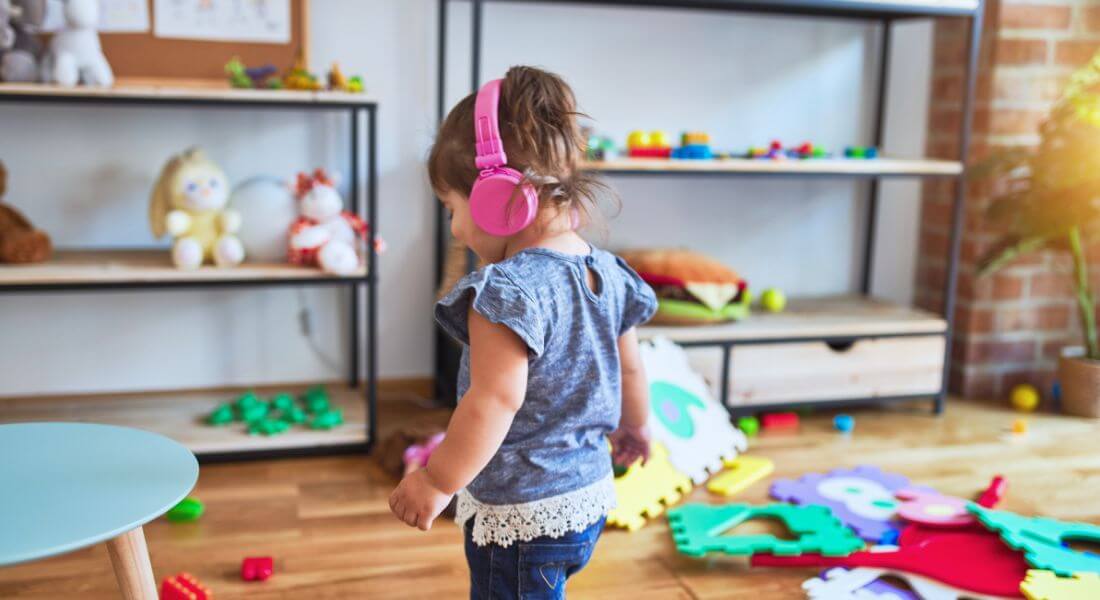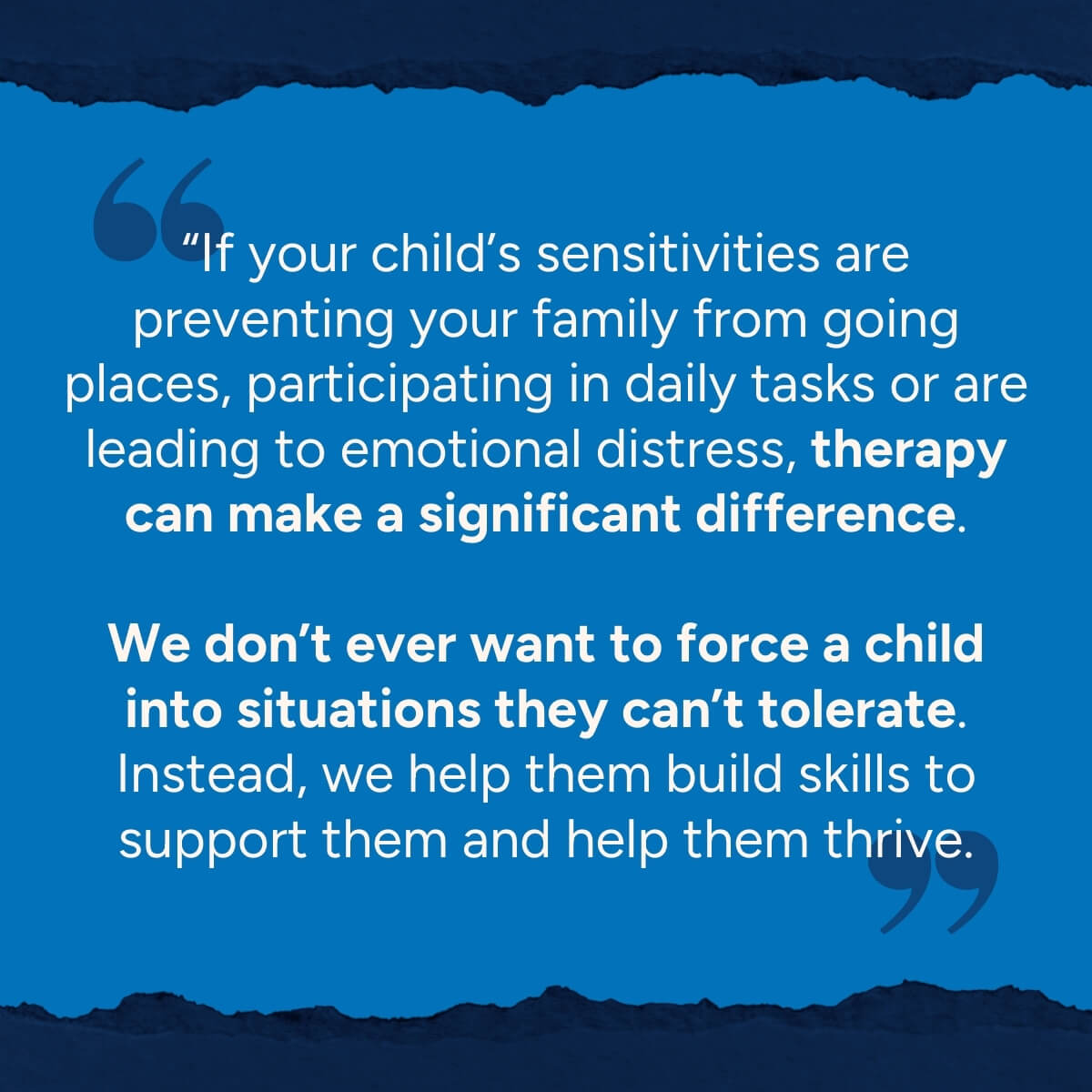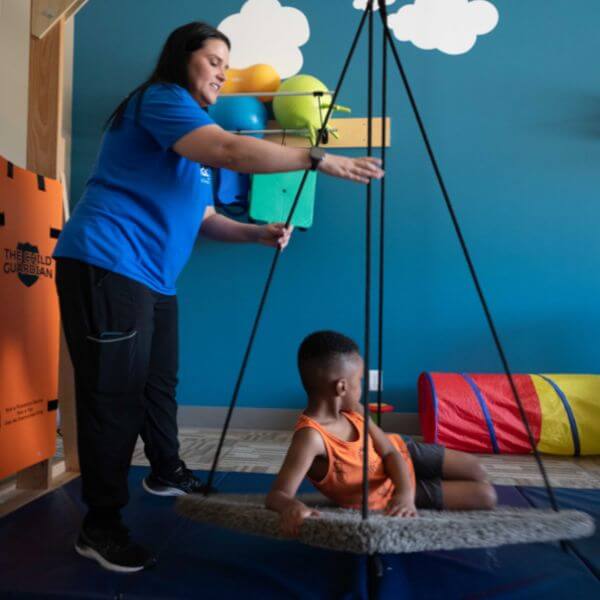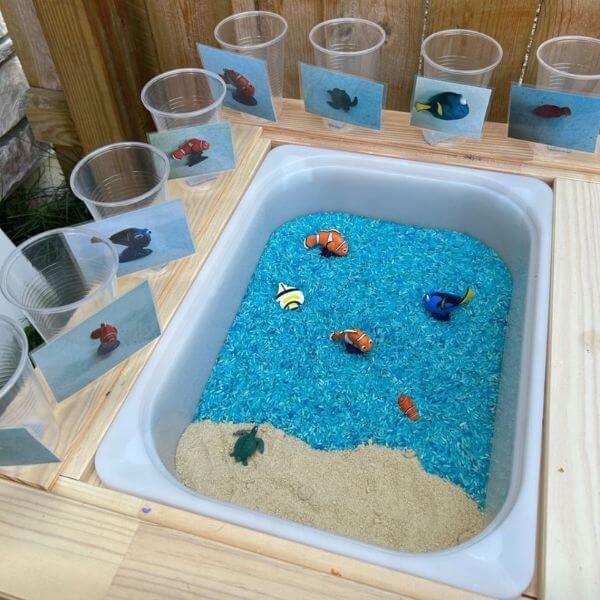How to Help Kids with Sensory Issues
May 16, 2025
May 16, 2025

If you’ve ever watched your child cover their ears at the grocery store or cry over the feeling of certain clothing, you are not alone. These are just a few examples of what sensory issues can look like played out in real life.
At Hopebridge Autism Therapy Centers, we frequently hear from caregivers whose children experience heightened reactions to everyday sensations, as well as others whose kids seek them out in constant motion.

Noise cancelling headphones are a great tool for children to help control sensory overload from sound.
While everyone has their own sensory preferences, for some individuals, these reactions are so strong that they interfere with daily life—from going to school or mealtime, to an unavoidable trip to a public restroom (think loud hand dryers, intense smells, unexpected water pressure, and the stress of a toilet flushing before you’re ready).
To help families better understand these challenges and how to support their children, we spoke with Haley Hatfield, the outpatient clinical trainer and professional development advisor at Hopebridge. She shared expert insight on what sensory sensitivities can look like, how they relate to autism, and how therapies like applied behavior analysis (ABA) and occupational therapy (OT) work together to make a difference.
Sensory sensitivities can appear in different ways, depending on how a child’s brain processes the sensory input around them. These reactions generally fall into two categories: hyperreactivity (a low tolerance to sensory input) and hyporeactivity (a high tolerance or craving for sensory input).
Children who experience hypersensitivity may become overwhelmed by sensory experiences that others barely notice. These kids are often considered sensory avoiders and might:
Kids who experience hyposensitivity are sensory seekers who have a higher threshold and may not register input until it is significantly intense. These children may:
There are actually eight senses – not just the five we often think of – which include:
“Each sense can have its own response pattern. A child might crave tactile input but avoid vestibular input like swinging or climbing. It’s not always one or the other,” said Haley.
Sensory processing differences are common in children with autism spectrum disorder (ASD). While not every child on the spectrum will experience sensory sensitivities, they’re included within the diagnostic criteria for ASD. Research shows that between 53% and 95% of children with autism demonstrate some degree of sensory processing difficulties.
Autism criteria include two broad categories: deficits in social communication and interaction, and restricted and repetitive behaviors and interests.
Within this second category, over-responsiveness or under-responsiveness to sensory input is one of four possible characteristics clinicians consider. A child doesn’t need to display all four traits to meet an autism diagnosis, but sensory sensitivities are one of the recognized signs of autism.
However, autism isn’t the only diagnosis associated with sensory challenges. Many children experience sensory processing difficulties outside of – or in tandem with – an autism diagnosis, including those with:
In these cases, sensory issues may affect a child’s ability to regulate emotions, focus or participate in everyday routines.
Many people – neurodivergent and neurotypical – have their own unique sensory preferences. It’s when those differences start to interfere with daily life that it’s time to seek help.

A quote from Haley Hatfield, Outpatient Clinical Trainer & Professional Development Advisor at Hopebridge
“If your child’s sensitivities are preventing your family from going places, participating in daily tasks or are leading to emotional distress, therapy can make a significant difference,” said Haley. “We don’t ever want to force a child into situations they can’t tolerate. Instead, we help them build skills to support them and help them thrive.”
At Hopebridge, ABA and OT clinicians work closely together to support children with sensory challenges.
“We want each child feel happy, relaxed and engaged during therapy,” said Haley. “That starts with a regulated sensory system. It’s imperative that OT and ABA are working together to ensure the sensory systems are not getting overwhelmed with input, but that they’re also getting enough input to meet their needs throughout the day.”
For example, if a child seeks tactile input, therapists may incorporate preferred fidget toys, textured materials or sensory bins into their day. If a child is sensitive to auditory input, they might use noise-reducing headphones or take breaks in quiet spaces.
Daily routines are often packed with sensory experiences such as feeding, brushing teeth, taking a bath and bedtime routines. Therapy can help families identify what might be causing sensory overload for your child and create a plan to make those activities more manageable.

An Occupational Therapy swing is used to help children who seek the swing sensory experience.
“As a caregiver, you also need to identify your own sensory needs to help yourself stay regulated. If your child seeks auditory input, but you are easily overstimulated by noise, you might need to find your own quiet space sometimes to ensure you’re not overwhelmed with daily life,” said Haley.

An example of a sensory bin made and used in a Hopebridge Autism Therapy Center.
We work with families every day who are searching for help with sensory issues. Whether your child already has a diagnosis of ASD or SPD or you’re exploring the early signs, understanding their sensory processing challenges is key to helping them thrive.
With the combined support of ABA, occupational therapy and even speech therapy to help them voice their own concerns and cravings, your child can build the tools they need to better navigate their world—and you can feel more confident in how best to support them.
If your child is struggling with sensory sensitivities, Hopebridge’s collaborative, interdisciplinary service approach ensures your child’s needs will be understood and addressed with care. Whether you’re seeking autism testing or you are ready to start with an evaluation for occupational therapy or ABA, our team is here to help. With centers across the country, contact us today to learn more about the Hopebridge services available to your family.
*Informed consent was obtained from the participants in this article. This information should not be captured and reused without express permission from Hopebridge, LLC. Testimonials are solicited as part of an open casting call process for testimonials from former client caregivers. Hopebridge does not permit clinical employees to solicit or use testimonials about therapeutic services received from current clients (Ethics Code for Behavior Analysts 5.07-5.08; BACB, 2020). Hopebridge does not provide any incentives, compensation, or renumeration for testimonials provided by a former client or client caregiver.
Parenting Resources
February 18, 2019
Understanding Early, Intermediate and Advanced Learners
Parenting Resources
November 21, 2023
BCBA-Approved Toys for Learning and Development During Cyber Week
Autism in Entertainment
July 23, 2025
Building Bridges | Episode 1: The Family Experience at Hopebridge
Parenting Resources
September 24, 2019
10 Easy Sensory Activities for Children with Autism